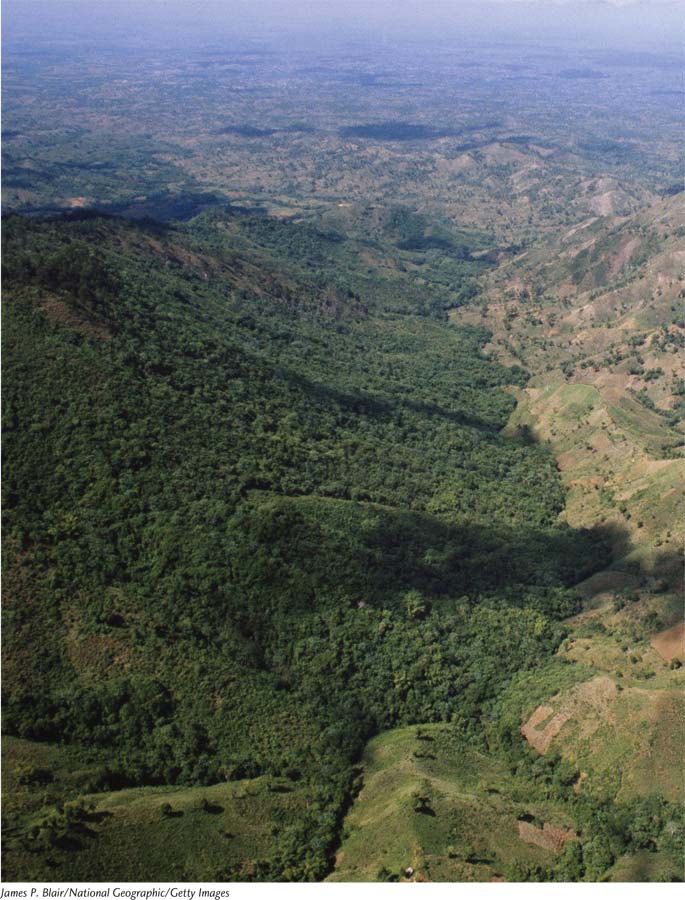Chapter Introduction
chapter 3
Ecosystem Ecology

Reversing the Deforestation of Haiti
Even before the devastating earthquake of 2010, life in Haiti was hard. On the streets of the capital city, Port-
Relying on charcoal for fuel has had a serious impact on the forests of Haiti. In 1923, 60 percent of this mountainous country was covered in forest. However, as the population grew and demand for charcoal increased, the amount of forest shrunk. By 2012, with more than 9 million people living in this small nation, less than 2 percent of its land remained forested. Today, most trees in Haiti are cut before they grow to more than a few centimeters in diameter. This rate of deforestation is not sustainable for the people or for the forest.
By 2012, with more than 9 million people living in this small nation, less than 2 percent of its land remained forested.
Deforestation disrupts the ecosystem services that living trees provide. In Chapter 1 we saw how events on Easter Island demonstrated some of the consequences of subjecting land to massive deforestation. When Haitian forests are clear-
But the news from Haiti is not all bad. Since the 1980s, the U.S. Agency for International Development, in cooperation with other groups, has provided funds to plant 60 million trees in Haiti. Unfortunately, simply planting trees is not enough; the local people can’t afford to let trees grow when they are in desperate need of firewood and charcoal. One solution has been to plant mango trees (Mangifera indica). Because a mature mango tree can provide $70 to $150 worth of mangoes annually, this value provides an economic incentive to let the trees grow to maturity. The deforestation problem is also being addressed through efforts to develop alternative fuel sources, such as discarded paper that is processed into dried cakes that can be burned. In 2013, the president of Haiti announced a new program to plant 50 million trees every year, with the goal of moving the country from the current 2 percent forest cover to 29 percent forest cover 50 years from now.
Extensive forest removal is a problem in many developing nations. Widespread removal of trees on mountains causes rapid soil erosion and substantial disruptions of the natural cycles of water and soil nutrients. This leads to long-
Sources:“Haitians seek remedies for environmental ruin,” National Public Radio, July 15, 2009, http:/
The story of deforestation in Haiti reminds us that all the components of an ecosystem are interrelated. As we noted in Chapter 1, an ecosystem is a particular location on Earth distinguished by its particular mix of interacting biotic and abiotic components. A forest, for example, contains many interacting biotic components, such as trees, wildflowers, birds, mammals, insects, fungi, and bacteria, that are quite distinct from those found in a grassland. Ecosystems also have abiotic components such as sunlight, temperature, soil, water, pH, and nutrients. The abiotic components of the ecosystem help determine which organisms can live there. In this chapter, we will see that ecosystems control the movement of the energy, water, and nutrients organisms must have to grow and reproduce. Understanding the processes that determine these movements is the goal of ecosystem ecology.